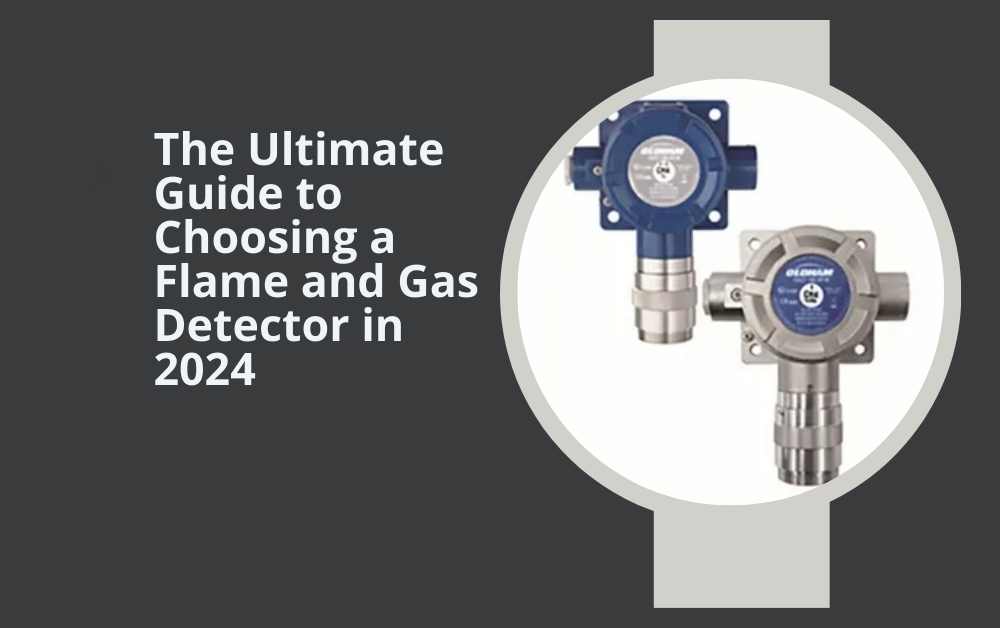The importance of flame and gas detector cannot be overstated. Whether it’s in industrial settings, commercial spaces, or even homes, having reliable detectors in place can mean the difference between life and death. But with so many options available in the market, how do you choose the right one for your needs? In this comprehensive guide, we’ll walk you through everything you need to know to make an informed decision.
Understanding Flame and Gas Detectors
What are Flame and Gas Detectors?
Flame and gas detectors are devices designed to detect the presence of potentially harmful gases or flames in the surrounding environment. They work by sensing specific gases or wavelengths of light emitted by flames, triggering an alarm or other response when a threat is detected.
Why are They Important?
The primary purpose of flame and gas detectors is to protect life and property by alerting individuals to the presence of hazardous conditions. They play a crucial role in preventing accidents, fires, and explosions in a variety of settings, including industrial plants, refineries, laboratories, and more.
Types of Flame and Gas Detectors
There are several different types of flame and gas detectors available on the market, each with its own unique capabilities and applications. Here are some of the most common types:
1. Catalytic Bead Sensors
Catalytic bead sensors are designed to detect the presence of combustible gases by measuring changes in temperature resulting from combustion reactions. They are commonly used in environments where combustible gases are present, such as oil refineries, chemical plants, and gas pipelines.
2. Infrared (IR) Sensors
Infrared sensors work by detecting the infrared radiation emitted by flames. They are highly sensitive and can detect flames from a distance, making them ideal for applications where early detection is critical, such as in oil and gas facilities, power plants, and warehouses.
3. Ultraviolet (UV) Sensors
Ultraviolet sensors detect the ultraviolet radiation emitted by flames. They are often used in conjunction with infrared sensors to provide enhanced flame detection capabilities, especially in outdoor environments where sunlight and other sources of infrared radiation may be present.
4. Flame Ionization Detectors (FIDs)
Flame ionization detectors work by measuring the conductivity of ions produced during combustion. They are highly sensitive and can detect a wide range of combustible gases, making them suitable for use in a variety of applications, including environmental monitoring, leak detection, and process control.
Factors to Consider When Choosing a Flame and Gas Detector
Choosing the right flame and gas detector for your needs requires careful consideration of several factors. Here are some key things to keep in mind:
1. Detection Method
Consider the detection method used by the detector, as different methods may be more suitable for specific applications. For example, infrared sensors are ideal for detecting flames, while catalytic bead sensors are better suited for detecting combustible gases.
2. Sensitivity and Accuracy
Look for detectors that offer high sensitivity and accuracy, as this will ensure reliable detection of potential hazards. Consider factors such as detection range, response time, and false alarm rate when evaluating the performance of a detector.
3. Environmental Conditions
Take into account the environmental conditions in which the detector will be used, such as temperature, humidity, and presence of dust or other contaminants. Choose a detector that is designed to operate reliably in the specific conditions of your facility or application.
4. Maintenance Requirements
Consider the maintenance requirements of the detector, including calibration, sensor replacement, and routine testing. Opt for detectors that are easy to maintain and service, as this will help ensure continued reliability and performance over time.
5. Cost
While cost is certainly a factor to consider, it should not be the sole determining factor when choosing a flame and gas detector. Instead, weigh the cost against the performance, reliability, and suitability of the detector for your specific needs.
Best Practices for Installation and Use
Once you’ve selected a flame and gas detector, it’s important to follow best practices for installation and use to ensure optimal performance and reliability. Here are some tips to keep in mind:
- Install detectors in locations where they will be most effective, such as near potential sources of gas leaks or flames.
- Follow manufacturer recommendations for installation, calibration, and maintenance to ensure proper operation.
- Regularly test detectors to verify their functionality and sensitivity.
- Train personnel on how to respond to detector alarms and take appropriate action in the event of a gas leak or fire.
- Periodically review and update your flame and gas detection system to incorporate new technologies and best practices.
Conclusion
In conclusion, choosing the right flame and gas detector is essential for ensuring the safety and security of your facility, employees, and assets. By understanding the different types of detectors available, considering key factors such as detection method and environmental conditions, and following best practices for installation and use, you can select a detector that meets your needs and provides reliable protection against potential hazards. So, take the time to research your options, consult with experts if needed, and invest in a detector that will give you peace of mind knowing that you’re prepared for whatever may come your way.
Now that you have the ultimate guide to choosing a flame and gas detector in 2024, you can make an informed decision and safeguard your environment effectively.
Note :- For more insightful articles related to this topic, feel free to visit www.xgenblogs.com.au.
